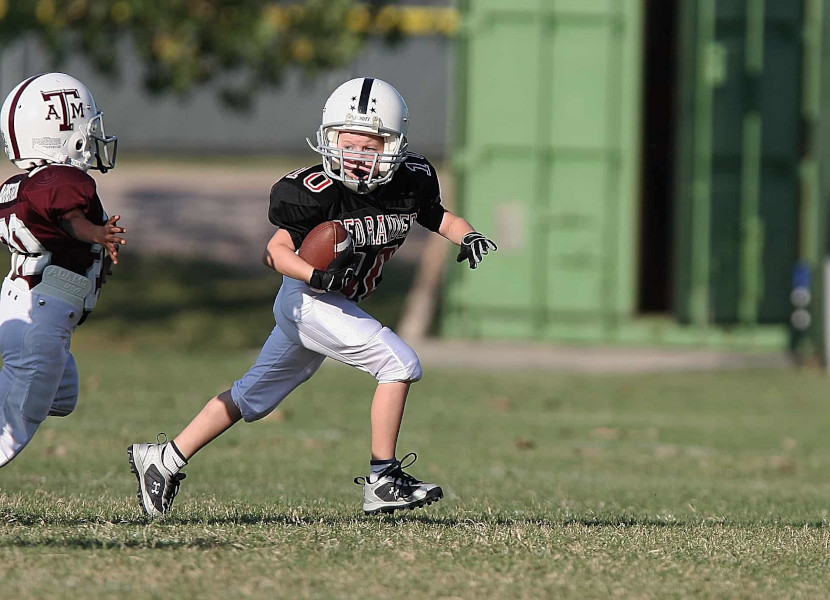Concussions aren’t simple in the first place; the medical world has a lot to learn about what happens during a concussion, how they can be prevented and how they can best be treated. When looking into concussion and how it presents in kids, things get even more complicated.
The consensus statement at the 4th International Conference on Concussion in Sport (http://bjsm.bmj.com/content/47/5/250) includes an entire section on special populations including “child and adolescent athletes” who they define to be 5-12 years of age. This section provides some detail into the different challenges or risks that child concussion patients may experience and advises that overall a “conservative” and “cautious” approach is taken during treatment. There was even a sports concussion assessment tool (SCAT) created for this population called the Child SCAT3 (http://bjsm.bmj.com/content/bjsports/47/5/263.full.pdf).
There are quite a few factors in play that cause a child’s concussion experience to be so different than that of an adult’s.
Ability to Communicate and Understand Symptoms:
Kids don’t have any frame of reference for pain; all pain is too much pain. That makes it very challenging for children to understand why they are experiencing pain, how to cope with their pain and how to appropriately communicate their pain. Using a universal 1-10 pain scale with a child does not provide accurate insight into how the child is actually feeling; many children have not experienced pain above a 5 or 6, especially not lasting pain. Kids may also experience symptoms that are outside the realm of pain such as fogginess, dizziness, vertigo, blurred vision and nausea. Many adults have difficulty describing some of these symptoms so there is that additional challenge with children when trying to create and quantify a symptom list.
Growth Spurts:
Many concussion symptoms are caused by tight muscles impacting on surrounding blood vessels and nerves. When a child experiences a growth spurt, the bones grow much faster than the surrounding muscles, so the muscles stretch and tighten to accommodate the new growth. If a child has experienced a concussion, and then goes through a growth spurt, the tightening of postural muscles can worsen concussion symptoms, bring back old symptoms or bring on new symptoms. We have even seen cases of children who experience concussion-like symptoms after a significant growth spurt without experiencing a previous head injury.
Activity Level and Risk:
Healthy children are active, and likely get several hours of physical playtime each day, whether it is unstructured or in the form of sport. Children are also more likely to take risks than adults; they spend their time jumping off swing sets, diving for soccer balls and trying new tricks on their skateboards. This kind of play teaches kids how high is too high, how to develop athletic skills and how to recover from a scraped knee. Unfortunately, riskier play, as well as the greater volume of active play, increases the risk of head injury for children.
Ability to Achieve Cognitive and Physical Rest:
In the first few days after a concussion, it is usually advised that the patient avoid cognitive and physical stimulation. This means that active play, screens (such as television and cell phones), and reading should be avoided. This kind of stimulation blackout is much more difficult for a child than an adult. It is difficult to help a child understand why they need to rest and even if the child does understand, they may struggle with boredom and the urge to play. If a child (or an adult) is unable to achieve cognitive and mental rest in the first few days after a concussion, symptoms may increase. *Please remember that it is now recommended that cognitive and physical rest is recommended for up to 3 days. New research shows that prolonged rest can actually lead to a prolonged recovery process. (https://completeconcussions.com/2018/01/22/rest-physical-activity-concussion/)
Brain Development:
Lorem ipsum dolor sit amet, consectetur adipiscing elit. Ut elit tellus, luctus nec ullamcorper mattis, pulvinar dapibus leo.
The brain is not fully developed until around 25 years of age. When the brain is still developing, it is more susceptible to injury.
(https://www.ncbi.nlm.nih.gov/pmc/articles/PMC4096849/ )
Physical Strength:
The postural muscles of the neck and upper body of children are not as strong as that of adults, therefore it takes less force for the body to sustain a concussion. The neck acts as a suspension system for the brain that can absorb force and can reduce excessive back and forth movement (such as whiplash). A stronger neck is able to absorb more force and prevent or reduce the severity of a concussion when the body or head is confronted with a hit or blow. The immature neck muscles of a child are not as protective against force than that of an adult, so children are more susceptible to a concussion if they sustain a blow.
If you are interested in booking an assessment with one of our physiotherapists, you can call the clinic at 519-837-0701 or send an email to patientcare@mooremyoworx.com

